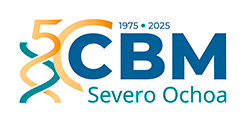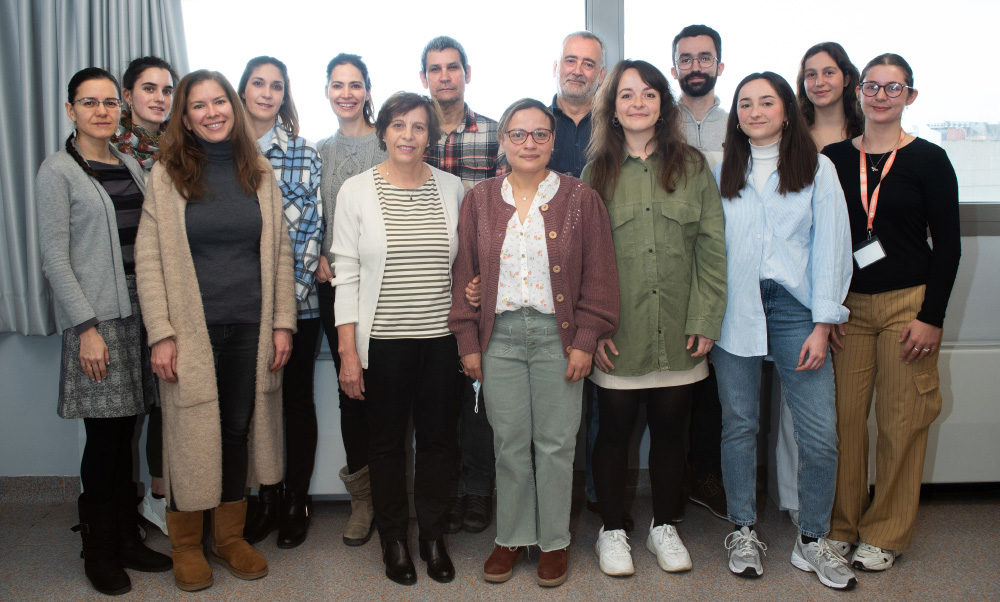Scientific Program
Interactions with the environment
RESEARCH GROUP
Signal transmission through the receptor for T-cell antigen

Balbino Alarcón
In our laboratory we investigate the signaling mechanisms of the T-cell receptor (TCR), which plays the key role in distinguishing between self and foreign antigens. This has led to the design of new drugs for the treatment of autoimmune diseases and also to the discovery of the RRAS2 gene as a driver of chronic lymphocytic leukemia and breast cancer.
Research
T lymphocyte activation requires the recognition of an antigenic peptide bound to MHC (pMHC) by the T cell antigen receptor (TCR). The TCR contacts the antigen extracellularly through its variable α and β chains; as these have very short cytoplasmic tails, it makes the initiation of signaling through the CD3 subunit, which has longer tails that allow them to perform intracellular interactions. We have found that the TCR is organized in the plasma membrane of resting T cells as oligomers of up to 20 TCRs that we have termed TCR nanoclusters. We believe that the organization of the TCR into nanoclusters may partly explain the high sensitivity of T cells for antigen despite the low affinity of monovalent TCR for pMHC. Indeed, we have recently discovered that TCR nanoclustering allows for cooperativity phenomena between pMHC-committed and uncommitted TCRs. Furthermore, we have proposed that conformational changes mediate the conversion of pMHC-TCR contacts into CD3-driven intracellular signals, which triggers the TCR.
One of the consequences of the conformational change in the TCR is the exposure of a proline-rich sequence (PRS) of CD3ε that is available to bind the adaptor protein Nck. We have developed low molecular weight inhibitors of Nck recruitment to the TCR as immunomodulatory agents. These inhibitors are orally available and show potent prophylactic and therapeutic effect in different models of autoimmune diseases, while preventing T cell response to pathogens. Another direct effector of the TCR is the small GTPase RRas2 (also known as TC21), which constitutively binds non-phosphorylated TCR and plays an important role in homeostatic signaling through PI3K. We are studying the role of RRas2 in physiological processes of T and B lymphocytes, such as homeostatic control of populations, immune synapse formation, thymic selection, germinal center formation, as well as in pathological processes such as the formation of T and B cell lymphomas and leukemias. Our most interesting recent findings suggest that RRas2 is an oncogenic driver in the generation of chronic lymphocytic leukemias and in some types of breast cancer. RRas2 drives cancer generation in the absence of activating mutations that are common in KRas and other classical Ras GTPases.
Group members

Balbino Alarcón Sánchez
Lab.: 221 Ext.: 4555
balarcon(at)cbm.csic.es

Aldo Jorge Borroto Revuelta
Lab.: 221 Ext.: 4600
aborroto(at)cbm.csic.es

Irene Azahara Arellano Rojo
Lab.: 221 Ext.: 4600
iarellano(at)cbm.csic.es

Tania Alejandra Gómez Aranda
Lab.: 221 Ext.: 4600
tgomez(at)cbm.csic.es

Rut Tercero Malo
Lab.: 221 Ext.: 4600
rtercero(at)cbm.csic.es

Alice Marie Stephanie Lombard
Lab.: 221 Ext.: 4600
alombard(at)cbm.csic.es

Ingrid Gabriela Cazacu
Lab.: 221 Ext.: 4555
Selected publications
Recruitment of Nck by CD3ϵ Reveals a Ligand-Induced Conformational Change Essential for T Cell Receptor Signaling and Synapse Formation
Diana Gil et al.
Coexistence of multivalent and monovalent TCRs explains high sensitivity and wide range of response
Wolfgang W.A. Schamel et al.
First-in-class inhibitor of the T cell receptor for the treatment of autoimmune diseases
Aldo Borroto et al.

Overexpression of wild type RRAS2, without oncogenic mutations, drives chronic lymphocytic leukemia
Alejandro M. Hortal et al.





